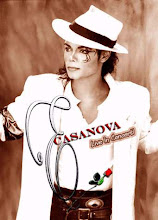Tuesday, December 16, 2008
ipa
[i], [], [e], [], [æ], [], [o], [], [u], [], [aj], [aw], [j] []
English vowels
We will be covering the vowels used in most dialects of Canadian English. Other dialects may not make all the distinctions given here, may make more distinctions, and may use different vowels for some of the words.
The transcriptions of the vowels are somewhat simplified. The way the symbols have been used is very close to the way they should be used in IPA, but the correspondence is not perfect.
Remember that the same vowel sound should be represented by the same symbol, regardless of a word's conventional spelling. This means:
if two words are homonyms, they should have exactly the same transcription
if two words rhyme, they should have the same vowel symbol (and the same symbols for any following consonants)
machine
heed
beat, beet
sneak
"small capital I"
bit
miss
hid
passé
bait
hayed
make
steak, stake
the Greek letter "epsilon" --
head
bet
many
"diagraph"
had
bat
"script-a"
father
bought
caught, cot
law
hoed
boat
low
beau
put
hood
book
blue
who'd
boot
drew
"caret"
but
cup
double
I, eye
fly
bite
hide
might
cow
bout
how'd
toy
Boyd
noise
The symbol before the [j] is called "open o". The "open o" sound is used as a sound by itself in many dialects of English, and in many other languages, but in Canadian English it is usually only found as the first half of the "oy" sound (and for many people before r).
"schwa" -- the neutral vowel
banana
enough
Manitoba
In English, schwas only occur in unstressed syllables. (Rogers also transcribes them as part of the "er" sound in stressed syllables.)
Next: Other aspects: stress, diphthongsPrevious: IPA symbols for English consonantsUp: Table of contents
Subscribe to:
Post Comments (Atom)


No comments:
Post a Comment